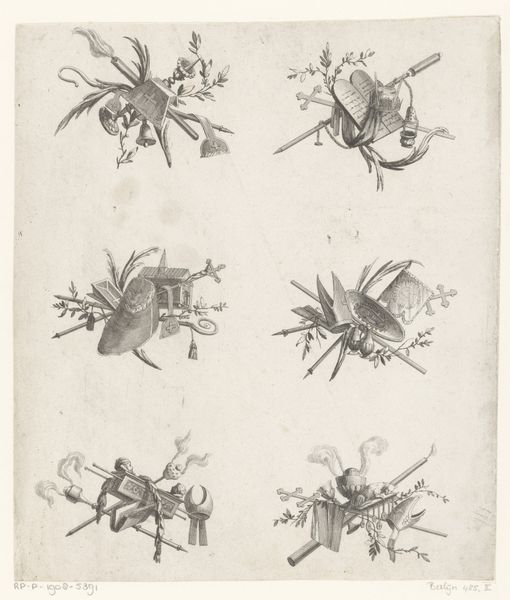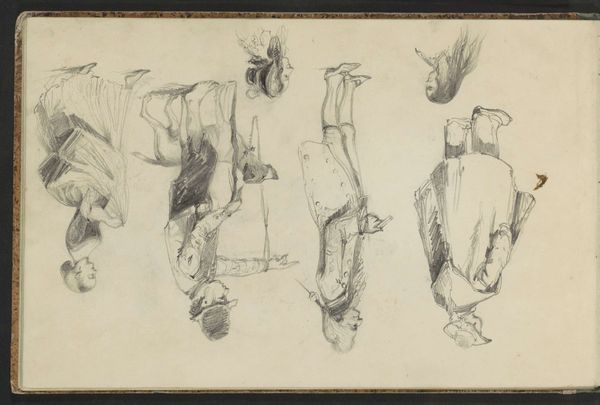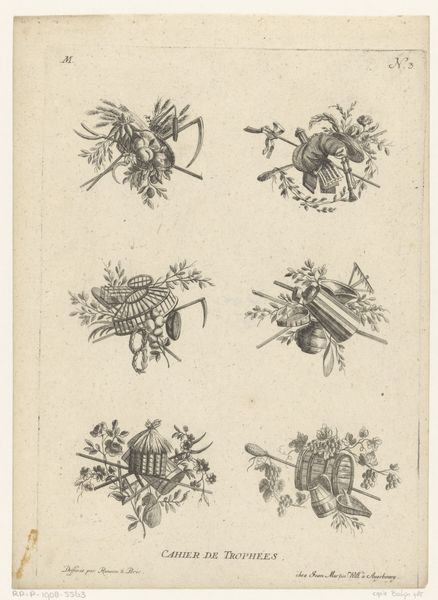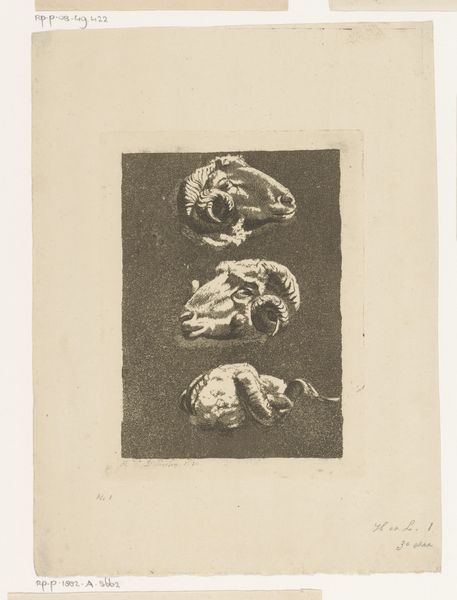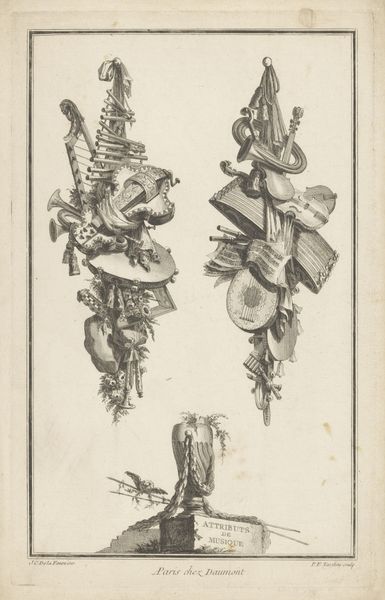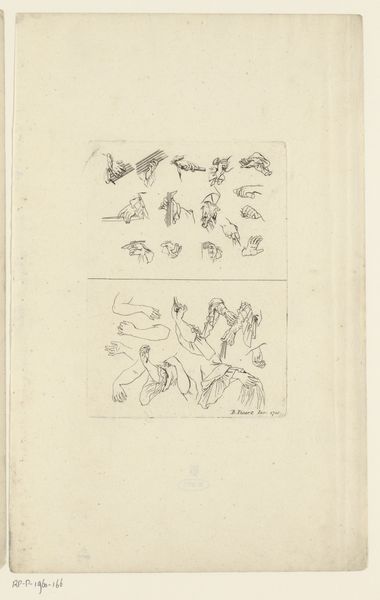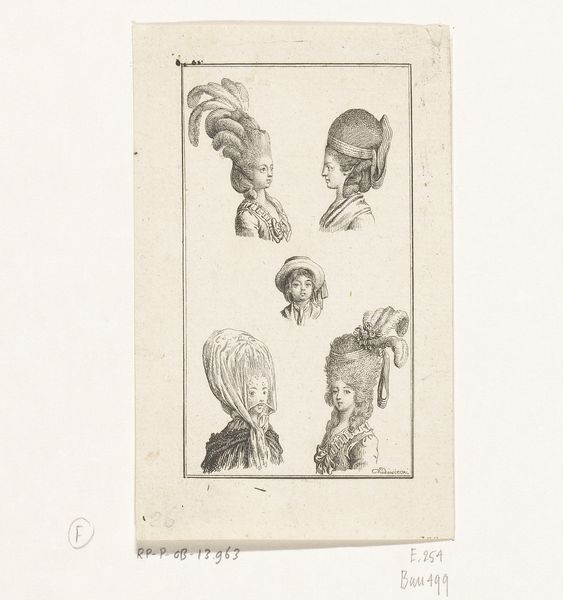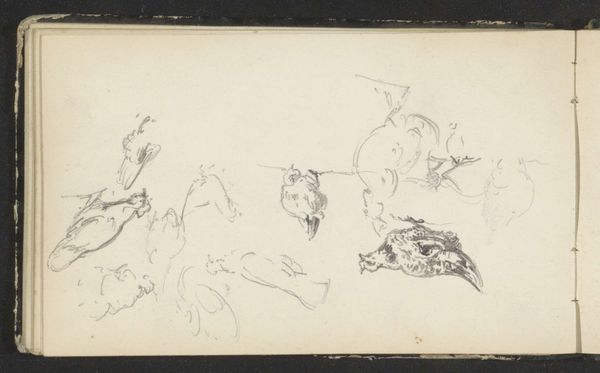
print, etching
# print
#
etching
#
figuration
#
15_18th-century
#
line
#
history-painting
#
academic-art
Dimensions: height 84 mm, width 49 mm
Copyright: Rijks Museum: Open Domain
Editor: This etching, "Berlijnse dameskapsels," by Daniel Nikolaus Chodowiecki, created in 1777, showcases an array of women’s hairstyles. I'm immediately struck by the incredible height and ornamentation. How would you approach analyzing a piece like this from a formal standpoint? Curator: Formally, we must observe the meticulousness of the line. Consider how Chodowiecki uses hatching and cross-hatching to define volume and texture, particularly in the rendering of the hairstyles themselves. Note how the linear quality is incredibly refined. Does the repetition of forms and the layout contribute to your understanding? Editor: Absolutely. The layout, dividing the hairstyles into two framed groups, creates a comparative visual study. Each hairstyle becomes a distinct element, but viewed together they produce a collective aesthetic statement. The linework emphasizes volume over colour, doesn't it? Curator: Precisely. It highlights the structural integrity of the hairstyles and the geometry. These women and the lines are academic and meticulous. Do you see other examples of the artist’s technical skills that catch your eye? Editor: The detail in the women’s facial features. The simple lines still show distinct personalities. Is it significant that the setting around them is basically nonexistent, which would normally imply the narrative? Curator: From a formal perspective, the omission emphasizes the pure form and shape. It asks us to analyse the line itself. The lack of context prevents distractions of background details and invites the viewer to study composition above all else. What have you learned looking more closely? Editor: I initially viewed it as a document of fashion. But looking at line and volume reveals a fascinating exercise in pure composition, regardless of its historical context. Curator: Indeed. And that’s what attention to form helps to provide. This approach transcends history. It shows an engagement with art theory and artistic design itself.
Comments
No comments
Be the first to comment and join the conversation on the ultimate creative platform.
